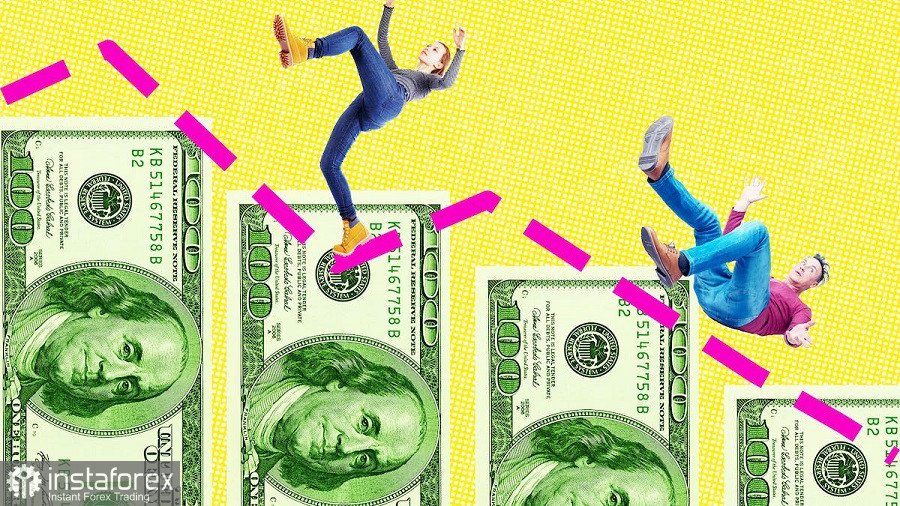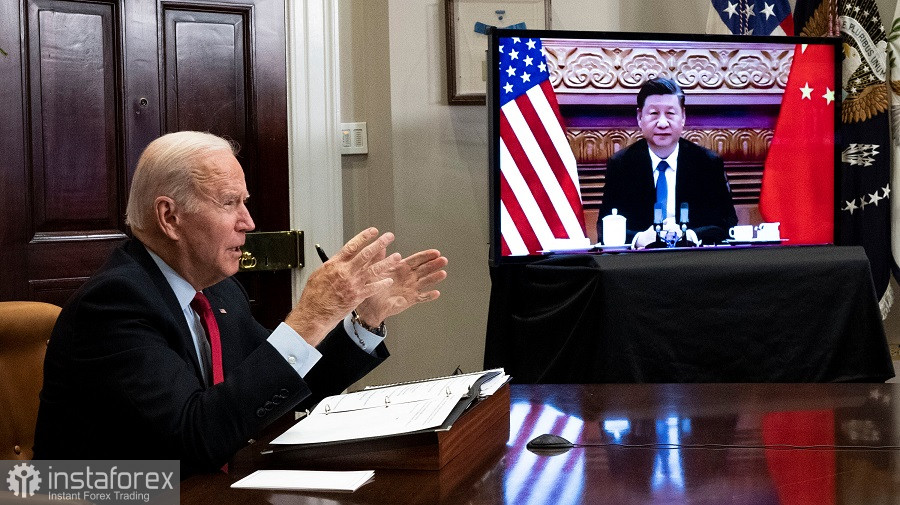The euro/dollar pair continues to show increased volatility, reflecting the events of the last ten days. The focus is not only on the resonant inflation report, which reflected the slowdown in the CPI in the US, but also on the comments of the Fed representatives, who announced a slowdown in the pace of monetary policy tightening. China is also adding fuel to the fire, which, amid the growth of new COVID infections, is taking the first steps to weaken the zero-tolerance policy for the coronavirus. The general fundamental picture is complemented by news of a geopolitical nature: today, it became known that a meeting between US President Joe Biden and Chinese President Xi Jinping will be organized on the sidelines of the G20 summit. This information flow allowed the buyers of the EUR/USD pair to update the three-month maximum, having been designated at 1.0307.

Let's take a closer look at the above fundamental factors. Let's start with the inflation report, all the components of which came out in the "red zone" yesterday. The overall consumer price index in annual terms was at 7.7% in October, with a forecast of growth to 7.9%. The indicator has declined for the fourth month after peaking at 9.1%. The core index showed similar dynamics. On an annualized basis, the core CPI rose by 6.3% in October, while most experts predicted an increase of 6.5%.
Considering the structure of yesterday's release, it can be concluded that the slowdown in inflation in the United States was influenced, in particular, by lower prices for health insurance and medical services, used cars, airline tickets, and clothing (0.7%). The growth rate of food prices has slowed down significantly. At the same time, the growth of real estate prices remains a stimulating factor for inflation. In particular, the cost of using housing has reached a 32-year high. Gasoline also began to rise again after a three-month price decline.
But in general, the trend can be traced with the naked eye: inflation in the United States began to slow down. Therefore, supporters of a less aggressive Fed policy had a weighty argument, which they hurried to use. This week, more "dovish" rhetoric was voiced, in particular, by Patrick Harker (head of the Philadelphia Federal Reserve), Mary Daly (head of the San Francisco Federal Reserve), and Esther George (head of the Kansas City Federal Reserve). They stated the expediency of slowing the rate hike "in the near future." Remember that Fed Chairman Jerome Powell, following the results of the November meeting, allowed such a scenario and even outlined a time frame. According to him, this will happen either at the subsequent meeting – that is, in December or February. Recent events have allowed traders to draw the appropriate conclusions. According to the CME FedWatch Tool, the probability of a 50-point rate hike at the December meeting is now 85%.
Thus, the northern momentum of EUR/USD is primarily due to two interrelated factors: a slowdown in inflationary growth in the United States and a decrease in hawkish sentiment regarding the possible outcome of the December Fed meeting. But at the same time, it should be emphasized that the Fed will keep its hawkish course the same. At the final press conference last week, Jerome Powell noted several times that "speed is not as important as the final result." He stated this in addition to his main message – that the marginal level of the discount rate "will be higher than expected." It is worth recalling that Powell stated the need for further rate hikes "even if the inflation rate starts to slow down." These are the key signals that will continue to support the dollar if the head of the Federal Reserve adheres to this strategy.
By the way, Mary Daly, who advocated slowing the pace of rate hikes yesterday, did not announce the curtailment of the current rate. According to her, "despite the good news, one month of data is still not enough." Also noteworthy are two more phrases voiced by the head of the Federal Reserve Bank of San Francisco. So, regarding the peak of the current cycle of tightening monetary policy, she said that in the current conditions, "it is better to have a little too high rates than not high enough." The second phrase complements the first: "a pause in the process of tightening the PREP is not a subject for discussion." By and large, Daly repeated the position of the head of the Fed, and most of her colleagues, in one form or another, will adhere to a similar line.
This suggests that it is too early to "bury" the dollar, even more so in the context of the EUR/USD pair.

The increased interest in risky assets spurs the northern momentum. It became known that despite the increase in the number of people infected with coronavirus, China has reduced the period during which people who have entered the country must remain quarantined. In addition, Beijing abolished the system that punished airlines for bringing sick people into the country. These measures were received positively by market participants, who saw this as a gradual departure from the zero-tolerance policy for COVID.
In addition, the level of anti-risk sentiment (which also supported the dollar) declined amid reports that Joe Biden will meet with Xi Jinping on November 14 on the sidelines of the G20 summit. This is an important geopolitical event, especially concerning the so-called "Taiwan issue." According to the official White House information, the parties "will discuss efforts to maintain and deepen the lines of communication between the United States and China, responsible competition management and joint work where their interests coincide, especially on transnational challenges that affect the international community."
Thus, the current northern pullback on the EUR/USD pair is justified and reasoned. But despite the rapid price growth, longs for the pair still look risky. The market will quickly recoup the fact of slowing down the pace of tightening the Fed's monetary policy. Gradually, it will be realized that the rate of increase is not so important – if the peak of the completion of the current cycle is above the expected (five percent) level. Therefore, for the EUR/USD pair, it is advisable to take a wait-and-see position.





















